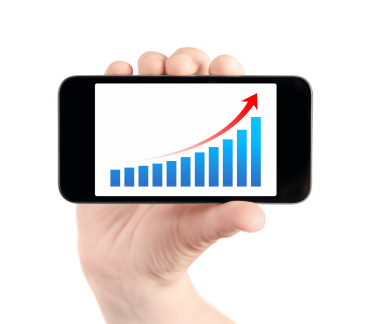
By year end, worldwide mobile connections are expected to reach 6.8 billion - nearly the entire population of the planet. So, a good marketer would tell businesses that getting on the mobile bandwagon is non-negotiable.
Opt-in SMS marketing is at the vanguard of the mobile economy as more and more people view smartphones not as a luxury, but as an integral tool in their daily lives for business and pleasure.
Consider this: a bulk SMS message sent to 10,000 people in an opt-in database will be read by 99.9%, according to figures from the UK firm TextLocal.com. Compare that to the average conversion rate of 0.1% for an online banner ad and the disparity between text and other forms of marketing becomes starkly obvious.
And it's not just SMS. Good mobile marketing strategies thrive on the various multi-media platforms available to smartphone users. With 56% of American adults now using smartphones, (according to Pew Internet & American Life Project), and mobile search expected to generate 27.8 billion more queries than desktop search by 2016, the mobile economy is progressing fast.
One major step in the right direction is to develop a mobile website. We’ve all come across a desktop website on our smartphone that is extremely difficult to navigate - pages not optimized for a small screen with tiny print and tabs that are difficult to access. According to a study by Compuware, nearly two-thirds of mobile web users are unlikely to return to a website where they had trouble, and 40% said they would visit a competitor’s mobile site instead.
What is even more important is the ability of staying local. According to Google, 50% of all mobile search traffic has a local intent. This means half of anyone searching from a mobile device includes a geographic term.
These statistics might be daunting for business owners, but the demands and habits of smartphone users can’t be ignored. Creating a strong mobile presence is critical for companies of all sizes, and local businesses must decide whether they want to step up or fall behind.
Here are some more numbers:
- Time spent with mobile apps is starting to challenge television with consumers spending 127 minutes per day using mobile apps and 168 minutes watching television per day.
- In 2012, 24% of consumers used a mobile device to visit a retailer’s site over Thanksgiving & Black Friday (Source: IBM, 2012).
- 4 out of 5 consumers use smartphones to shop.
- 57% of consumers will not recommend a business with a poorly designed mobile site.
- 40% of consumers will go to a competitor’s site after a bad mobile experience.
- 43% of smartphone owners have used their mobile device while in a store.
- 33% of smartphone owners have shared their location with retailers by using the map feature on a retail app, via a check-in service.
- Worldwide mobile payment transactions surpassed $171.5 billion in 2012, a staggering 62% increase from $106 million in 2011.
Going mobile is putting your brand into the consumer’s hands and pockets directly, anytime, anywhere. Whether it be through SMS text messaging or the similar Voice Broadcast (pre-recorded voice messages) and mobile websites, getting to people on the move is key. There is nothing like in the marketing world, which is why optimizing your marketing strategy to accommodate the shift from a conventional model to a mobile one, is the only way to go.
Mobile Marketing has allowed the developing world to compete in a way they never could in the era of megabucks marketing channels like glossy television advertising. And with the youth market tied firmly to their smartphones, the future of the mobile economy is promising and wide open, driving more businesses to focus on their mobile strategies.
